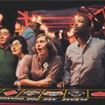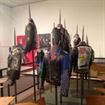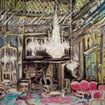M.C. Escher
Relativity, July 1953
Glenbow exhibit highlights the Dutch artist’s blending of reality and illusion
If your day seems especially boring or ordinary, why not take in some visions of the impossible?
Best known for his iconic images of paradoxical architecture, M.C. Escher’s distinctive lithographs and woodcuts are on display at the Glenbow Museum until August 18 in an exhibition entitled “M.C. Escher: The Mathemagician”.
Maurits Cornelis Escher, born in 1898 in the Netherlands, is one of the most recognized artists in the world. Though many people know of or have seen images of his work, few know the details or evolution of his career and even fewer have seen the originals in person.
Escher’s work is impressive to behold, even in reproduction, where it is evident that he took great effort to render his surreal scenes. Yet to see them in person is to be doubly captivated—every line and detail makes you realize the painstaking work it must have taken to create such intricate and often mind-boggling scenes.
The exhibit also allows you to trace the evolution of Escher’s work. Living in Italy in the 1920s, his earliest work depicted naturalistically-rendered landscapes, mostly buildings. But in the way he portrays the Italian architecture you can detect a fascination with geometry and symmetry.
The next phase of Escher’s work takes this interest further, exploring the “regular division of the plane” with repeating images of birds, fish, and other animals, sometimes multiplying or dividing them to create the illusion of infinity. He began to play also with depth, mirrors, and illusion, transitioning from the natural world of his early work to the surreal and uncanny.
This culminates in some of his most famous images of impossible and paradoxical architecture, where he returns to rendering buildings but with the addition of his explorations into mathematics and the surreal. It is here that we find the recognizable images of the infinite Penrose staircase, or the baffling interconnected stairways and walls of 1953’s “Relativity”.
Blending an exploration of physics and mathematics with the infinite and surreal possibilities of the imagination, Escher truly does deserve the title Mathemagician. It’s an exhibition that will work its magic on you, too.
This has been a guest post from Brandon Beasley. If you’d like more information on how to contribute to GetDown, email [email protected]
Related Posts
| Tweet |
|







[...] Read the rest at GetDown.ca. [...]